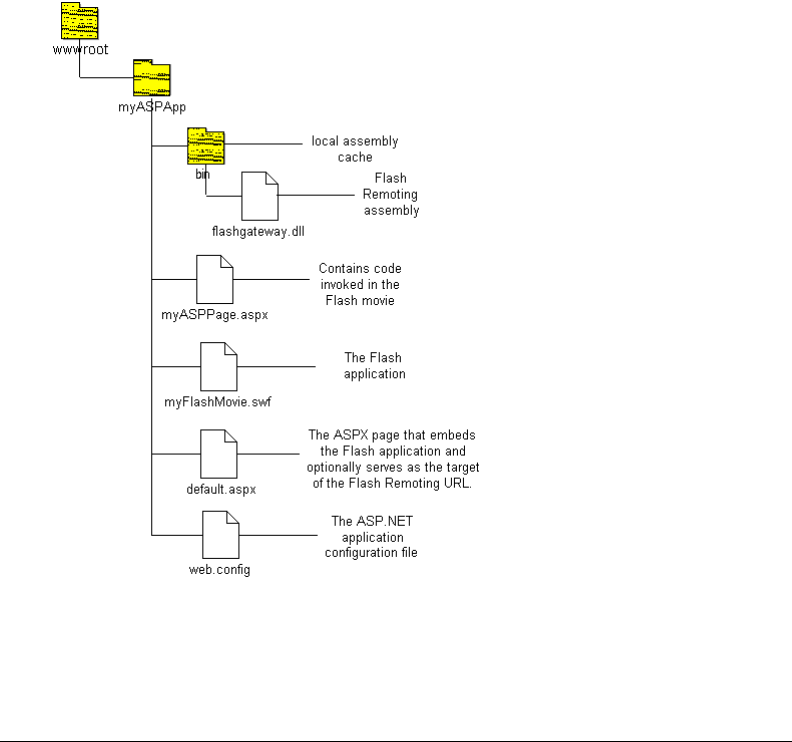User Guide
Table Of Contents
- Contents
- About Flash Remoting
- Getting Started
- Using Flash Remoting ActionScript
- Using the RemotingConnector component (Flash Professional only)
- Using Flash Remoting Data in ActionScript
- About Flash Remoting and data types
- Understanding Action Message Format
- Converting from ActionScript to application server data types
- Converting from application server data types to ActionScript
- ColdFusion to ActionScript data conversion issues
- About working with objects
- About working with RecordSet objects
- About working with XML
- The NetConnection Debugger
- Using Flash Remoting with ColdFusion MX
- Using Flash Remoting for Java
- About Flash Remoting for Java
- Calling Java classes or JavaBeans from ActionScript
- Calling Enterprise JavaBeans (EJBs) from Flash
- Calling servlets and JSPs from Flash
- Calling JMX MBeans from Flash (JRun only)
- Calling server-side ActionScript from Flash (JRun only)
- Handling function results in ActionScript
- Using Flash Remoting with JRun security
- Passing XML objects between Flash and Java
- Viewing Flash Remoting log entries
- Using Flash Remoting for Microsoft .NET
- Flash Remoting for Microsoft .NET
- Calling ASP.NET pages from Flash
- Making an ASP.NET page available to Flash Remoting
- Getting a reference to an ASPX-based service in ActionScript
- Invoking ASPX pages in ActionScript
- Using the Flash Remoting custom server control in ASPX pages
- Using the Flash Remoting namespace in code-behind files
- Using ASP.NET state management with Flash Remoting
- Using ASP.NET exception handling
- Using ADO.NET objects with Flash Remoting
- Displaying a RecordSet object in Flash with ActionScript
- Calling web services from Flash
- Calling ASP.NET assemblies from Flash
- Viewing Flash Remoting log entries
- Using NetServices and Connection Classes
- Index

Flash Remoting for Microsoft .NET 145
The facade structural design pattern can be particularly useful with Flash Remoting by reducing
the number of remote method calls required in a Flash application. You can use a service facade to
provide a single point of contact to a set of ASPX pages or DLL methods. You can call methods
on a DLL facade that is capable of calling various methods on several other DLLs, ASPX pages, or
web services, depending on the user’s current context in the application. This pattern reduces
network traffic and makes it easier to support different types of clients, change the enterprise data
model, or change the server implementation.
For more information on the .NET architecture and design patterns, go to http://
msdn.microsoft.com/architecture/.
Understanding the Flash Remoting for Microsoft .NET directory structure
To enable an ASP.NET application with Flash Remoting, you place the Flash Remoting assembly
in the application’s local assembly cache (bin directory) and register the assembly in the
application’s web.config file. In the simplest form, your ASP.NET application directory structure
might look like this:










